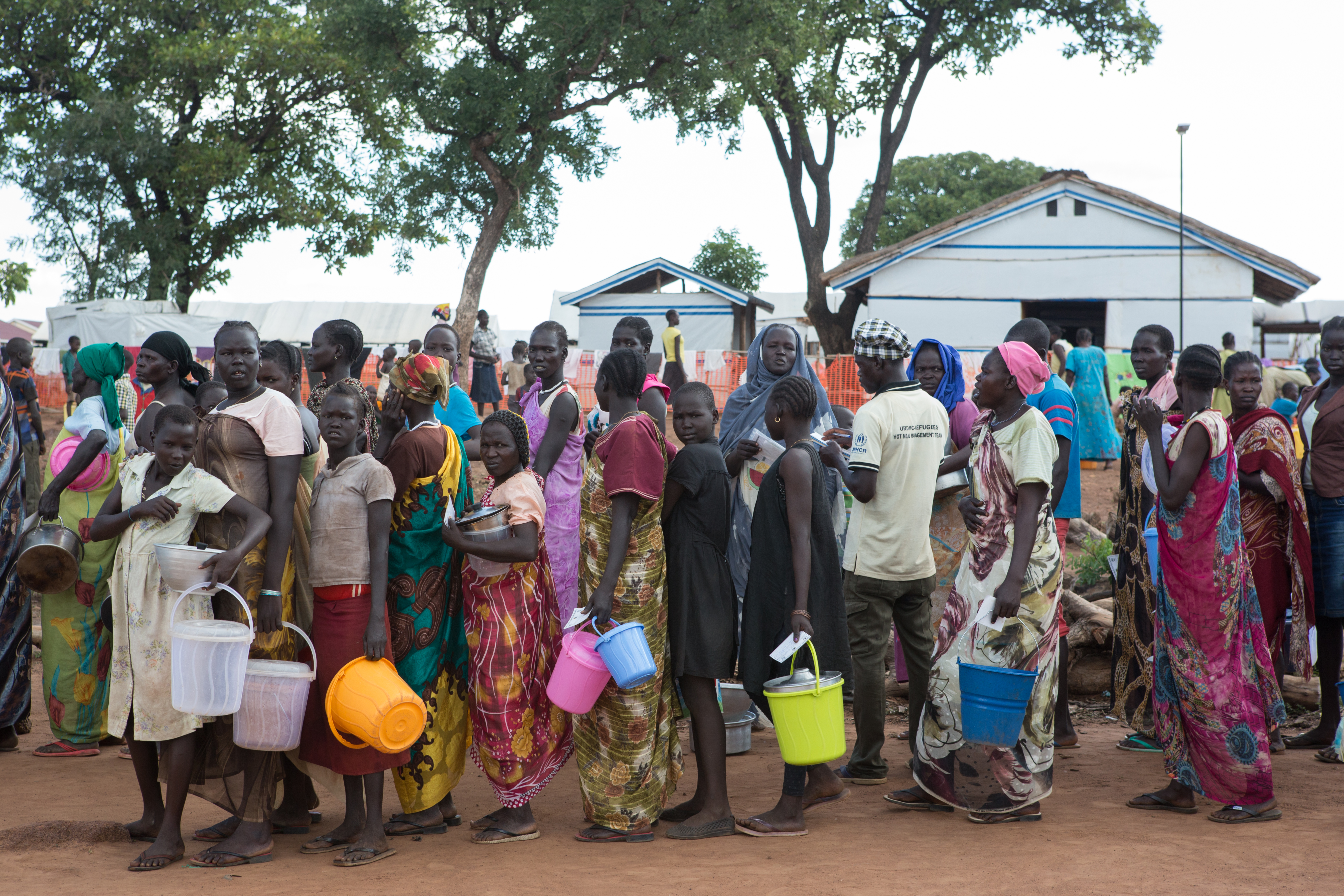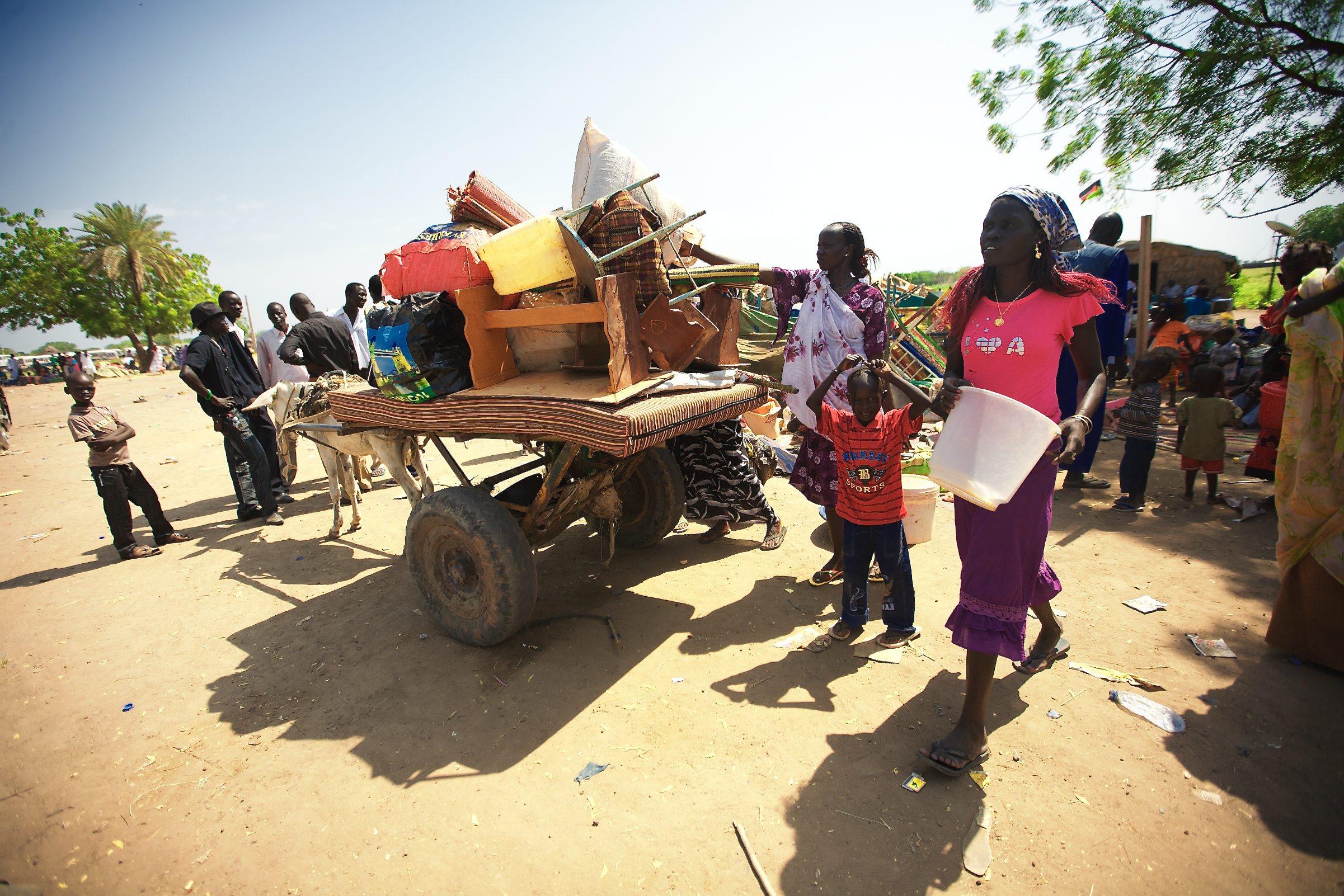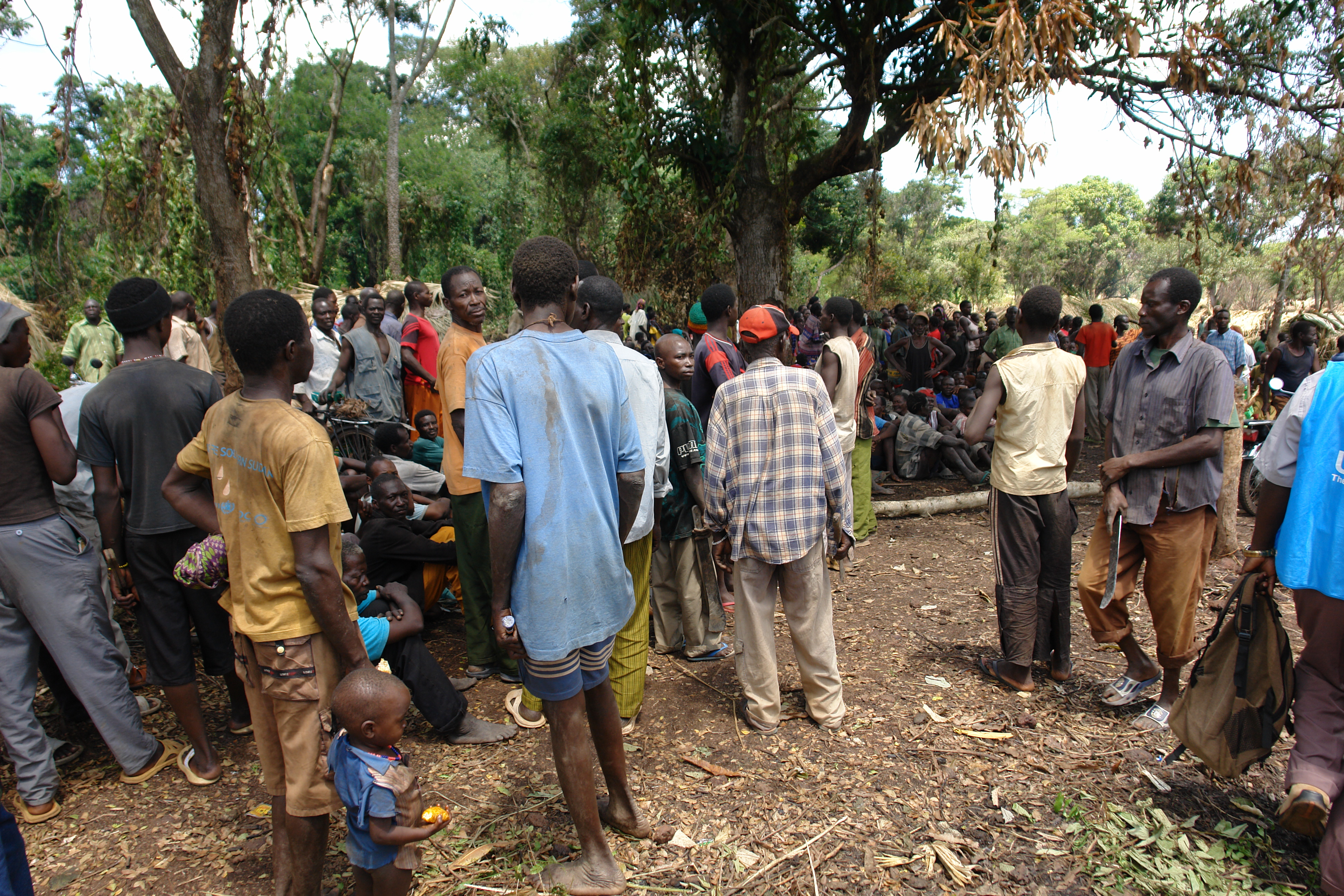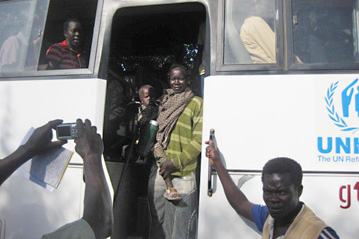Sudan: refugee go-and-see visits, Dinkas on the move
Sudan: refugee go-and-see visits, Dinkas on the move
We are taking steps to help south Sudanese refugees decide for themselves whether the time is right to go home, as peace is being established after 21 years of civil war. On Thursday 1, December we are organizing what we call "go-and-see visits" for two delegations of Sudanese refugees from Kakuma camp in north-western Kenya to their region of origin in Southern Sudan. One delegation of five elderly refugee representatives will fly to Kapoeta, 200 kilometres east of Juba, the new capital of the government of Southern Sudan. A second delegation of eight refugee representatives will go to Bor town, which is located 180 kilometres north of Juba. We recently sent an emergency team there to open a new office and also reinforced UNHCR's presence in Kapoeta.
In each case, refugees will meet with the local authorities and will be given a tour of the town. They will also meet with relatives they have not seen for many years. The delegations will go back to Kakuma on the same day and will inform their fellow refugees in Kakuma of their findings in southern Sudan.
The visits give the refugees an opportunity to see with their own eyes the situation on the ground in order to make a voluntary decision whether to come back to South Sudan. The area lacked many services even before the war, and fighting destroyed most of the infrastructure that did exist. In spite of the difficulties, many refugees have expressed a desire to go back to their homeland after years of exile in neighbouring countries. UNHCR expects to be able to start the first official repatriation movements before the end of the year. There are 73,000 Sudanese refugees in Kakuma camp and at this point, over 2,000 have registered with UNHCR to be repatriated to their areas of origin in Southern Sudan.
The 21-year-long conflict in Sudan, which ended with a peace accord signed in January, 2005, resulted in the displacement of 4 million people within Sudan. Another 500,000 became refugees in neighbouring countries.
Shortly, a group of up to 12,000 people and half a million cattle are scheduled to start moving through the Juba area on their way back to the Bor region. This group are Dinkas - one of the ethnic groups of Southern Sudan - who are originally from the Bor region, in the eastern part of Southern Sudan.
The Dinkas-Bor have been displaced for the past 16 years in the Western part of the country because of the war. The group had split up in 34 cattle camps and are now moving from Kotobi and Lui in Western Equatoria in the direction of Juba.
UNHCR, together with other UN agencies and non-governmental organizations, has set a way station in Lologo, located 15 kilometres north of Juba. Returnees will be able to spend the night there and will get a World Food Programme (WFP) food ration for 15 days as they continue their journey to Bor. UNHCR, one of many agencies involved in the movement, will register the returnees when they transit through Lologo and will provide protection monitoring. The International Organization for Migration plans to organize the transport of pregnant women, elderly and disabled people by barge from Juba to Bor, a journey of one or two days along the White Nile River. It will take several days for the men and cattle to reach Bor.






